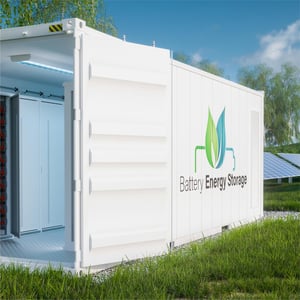European Metals Holdings Ltd (LON:EMH) has today announced a further upgrade of its JORC compliant Indicated Mineral Resource at the Cinovec Lithium/Tin Project in the Czech Republic, confirming its status as the largest Lithium resource in Europe
The Company has recently completed a four-month drilling campaign at Cinovec South, comprising six core drillholes for 2,697.1m meters, with the goal of closing ‘gaps’ in the existing resource model in and around the initial planned mining areas and upgrading part of the resource from the Inferred category to the higher confidence Indicated category. The results, summarised below, are satisfactory and exceeded expectations.
· For the entire Cinovec deposit (South and North), the drilling added 39.4 Mt of Mineral Resource grading 0.41% Li2O and 0.04% Sn (0.1% Li cutoff), or 220kt tonnes of lithium carbonate (LCE).
· Majority of resource increase (97%) is at Cinovec South where initial mining is planned.
· The Indicated Mineral Resource category increased by 7% to 372.4Mt@0.44% Li2O.
European Metals Managing Director Keith Coughlan said, “This drill program targeted areas of low historic data density with the aim of bringing these areas, which lie adjacent to the planned initial mining area, to Indicated Resource category so they can be used in the ongoing definitive feasibility study. The drilling was a success with some large areas of higher grade mineralisation defined in the target area.
On the back of this resource upgrade, we have commenced an optimisation of the mine design. When complete, this will allow finalisation of a grid drilling program for upgrading parts of the Indicated Resource to Measured Resource to facilitate the definition of proven reserves for the definitive feasibility study that is progressing well.”
MINERAL RESOURCE UPGRADE
Independent expert Lynn Widenbar of Widenbar and Associates updated the Mineral Resource Estimates. Mr Widenbar has compiled all resource estimates at Cinovec to-date.
Table 1: Cinovec Project Mineral Resource Estimate November 2017 (0.1% Li Cutoff)
|
CINOVEC NOVEMBER 2017 RESOURCE |
|||||
|
|
Cutoff |
Tonnes |
Li |
Sn |
W |
|
|
% |
(Millions) |
% |
% |
% |
|
INDICATED |
0.1 % Li |
372.4 |
0.206 |
0.04 |
0.016 |
|
INFERRED |
0.1 % Li |
323.5 |
0.183 |
0.04 |
0.013 |
|
TOTAL |
0.1 % Li |
695.9 |
0.195 |
0.04 |
0.014 |
Notes:
1. Mineral Resources are not Reserves until they have demonstrated economic viability based on a feasibility study or pre-feasibility study.
2. Mineral Resources are reported inclusive of any reserves and are prepared by Widenbar in accordance with the guidelines of the JORC Code (2012).
3. The effective date of the Mineral Resource is November 22, 2017.
4. All figures are rounded to reflect the relative accuracy of the estimate.
5. The operator of the project is Geomet s.r.o., a wholly-owned subsidiary of EMH. Gross and Net Attributable resources are the same.
6. Any apparent inconsistencies are due to rounding errors.
7. LCE is Lithium Carbonate Equivalent and is equivalent to Li2CO3.
The updated database incorporates a number of updates to drill collar location, downhole survey and assay data. There is a total of 1,222 holes (including 32 surface diamond holes drilled to date by European Metals) and 75,018 assay intervals. This includes underground sampling and adits which are entered as pseudo-drill holes in the database. Raw assay data has been composited to 1m intervals prior to analysis and estimation.
All data has been imported into Micromine 2016.1 software for further analysis and estimation.
(Please refer to the announcement on the European Metals Website for Figure 1 – European Metals Holdings (in red) and Historic Hole Locations – www.europeanmet.com.)
Geologic Model
A geological domain model was constructed using Leapfrog software with solid wireframes representing greisen, granite, greisenised granite and the overlying barren rhyolite. In addition, a thin overburden layer is modelled near surface and a low-mica granite is modelled to form the lower limit of the mineralisation. This was used to both control interpolation and to assign density to the model.
(Please refer to the announcement on the European Metals Holdings Ltd Website for Figure 2 – Long Section at -778890E showing geological model – www.europeanmet.com.)
Resource Estimation
Resource estimation was carried out separately for each geological domain, using only the data within each domain.
Ordinary Kriging was used as the estimation methodology, using variogram parameters derived from the variogram modelling (see Table 6.1) and search parameters derived from the Kriging Neighnbourhood Analysis, variogram modelling and drill hole spacing considerations. An “unfolding” search strategy was used which allowed the search ellipse orientation to vary with the locally changing dip and strike.
The primary search ellipse was 150m along strike, 150m down dip and 7.5m across the mineralisation. A minimum of 4 composites and a maximum of 8 composites were required. A second interpolation with search ellipse of 300m x 300m x 12.5m was carried out to inform blocks to be used as the basis for an exploration target. Block size was 10m (E-W) by 10m (N-S) by 5m.
After statistical analysis, a top cut of 5% was applied to Sn% and W%; no top cut is applied to Li%. Sn%, W% and Li% were then estimated by Ordinary Kriging within the geological solids.
(Please refer to the announcement on the European Metals Website for Figure 3 – Updated Indicated and Inferred in the Resource Model – www.europeanmet.com.)
Validation of the final resource model has been carried out in a number of ways including section comparison of data versus model, average grade comparison by domain, swathe plots and production reconciliation. All methods of validation have produce acceptable results.
Densities applied for Mineral Resource tonnage calculations are based on historical bulk density measurements which were reviewed by EMH staff in Czech; a dry bulk density of 2.57 t/m3 was assigned for granite and greisenised granite, and 2.70 t/m3 for greisen. Rhyolite and other materials were assigned a density of 2.60 t/m3. In addition, density measurements were carried out on core samples from the 2014-2016 drill campaigns, confirming these values.
BACKGROUND INFORMATION ON CINOVEC
PROJECT OVERVIEW
Cinovec Lithium/Tin Project
European Metals, through its wholly owned Subsidiary, Geomet s.r.o., controls the mineral exploration licenses awarded by the Czech State over the Cinovec Lithium/Tin Project. Cinovec hosts a globally significant hard rock lithium deposit with a total Indicated Mineral Resource of 348Mt @ 0.45% Li2O and 0.04% Sn and an Inferred Mineral Resource of 309Mt @ 0.39% Li2O and 0.04% Sn containing a combined 7.0 million tonnes Lithium Carbonate Equivalent and 263kt of tin. An initial Probable Ore Reserve of 34.5Mt @ 0.65% Li2O and 0.09% Sn has been declared to cover the first 20 years mining at an output of 20,800tpa of lithium carbonate.
This makes Cinovec the largest lithium deposit in Europe, the fourth largest non-brine deposit in the world and a globally significant tin resource.
The deposit has previously had over 400,000 tonnes of ore mined as a trial sub-level open stope underground mining operation.
EMH has completed a Preliminary Feasibility Study, conducted by specialist independent consultants, which indicated a return post tax NPV of USD540m and an IRR of 21%. It confirmed the deposit is be amenable to bulk underground mining. Metallurgical test work has produced both battery grade lithium carbonate and high-grade tin concentrate at excellent recoveries. Cinovec is centrally located for European end-users and is well serviced by infrastructure, with a sealed road adjacent to the deposit, rail lines located 5 km north and 8 km south of the deposit and an active 22 kV transmission line running to the historic mine. As the deposit lies in an active mining region, it has strong community support.
The economic viability of Cinovec has been enhanced by the recent strong increase in demand for lithium globally, and within Europe specifically.








































